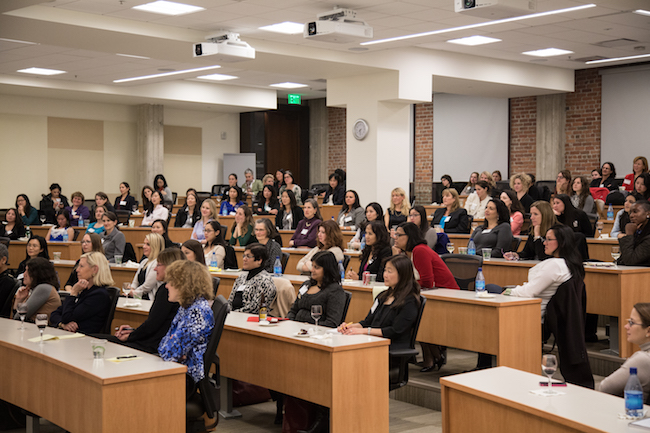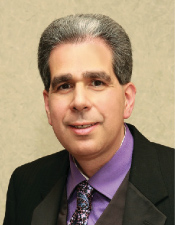
Women are increasing their numbers in EMBA programs, according to the new annual Executive MBA Council survey
It may not happen in the next few years, but executive MBA programs’ goal of closing the “gender gap” came closer to reality this year, according to an annual survey of more than 200 colleges and universities worldwide. The 2016 Executive MBA Council Membership Program Survey found that the percentage of female students climbed to 29.7% — an astonishing 4.3% jump from 2014 and the highest enrollment on record.
“Last year’s 27.6% was also an upward trend — we just didn’t know if that would continue, or if it would drop this year,” says Michael Desiderio, executive director of EMBAC, which polled hundreds of member schools that administer 300-plus EMBA programs in more than 30 countries around the world. “It was 27.6% last year, 29.7% this year, and if you were to go back to 2014, it was 25.4% — so that’s just over a 4% increase in two years, and that is a big deal in a number that’s been mostly flat for some time.”
The goal of achieving a 50-50 split in student gender representation in EMBA programs seemed to suffer a setback in 2013 when a Cambridge University Judge Business School study showed the number of female applicants had dropped seven percentage points, to 36%, from the previous year. Now, Desiderio says, schools’ emphasis on attracting more women — and a subtle but discernible shift in how female executives view the EMBA opportunity — have reversed the negative trend.
HELP NOT JUST WITH COMPETENCE, BUT WITH CONFIDENCE

Michael Desiderio
Desiderio, who has helmed EMBAC for nine years, remembers attending his first annual conference as the academic association’s executive director in 2007 when a panel of women executives spoke about the challenges facing women in the normal target range of EMBA programs.
“This one woman was saying, ‘When we’re having kids and rearing kids we’ve all got these full-time jobs, and now you want us to add what is effectively a full-time master’s, and we’re always going to have this sort of constraint,'” Desiderio says. “‘You’re not catching us at the tail end of the undergraduate or at the beginning of retirement when we want to go find something to do, you’re catching us right when it’s the busiest time of our lives.’ So the industry has been trying to find various ways to increase women’s numbers, and schools have done specific outreach, but there’s a sense that you’re already competing against the odds if you look at the data with boardrooms and all of that, and what I think we’re seeing is a sense that you’ve got to do something else that gives you yet another advantage. I think more women are starting to decide to look at this as an option to help with that.
“The women I’ve spoken with said it helped them not just with the competence, but with the confidence to take that next step.”
That’s not to say the gender gap is soon to be a thing 0f the past, Desiderio says. But it’s an important benchmark nonetheless. “It’s a stretch goal, but that’s what you want to do, you want to put it out there and sort of strive for it. Are we going to see that in the next few years? No, something dramatic would have to happen. But it’s a goal, and it’s a broader societal goal that’s being set by organizations and others elsewhere — which I think is great, frankly.”
MORE FUNDING OPTIONS FOR EMBA STUDENTS
EMBAC’s annual survey, conducted by Percept Research from March 22 to July 24 and completed by 91% of the nonprofit’s member programs, yielded other interesting findings. In 2016, the average age of enrolled EMBA students is 38, and students have 14 years of work experience and approximately nine years of management experience. Additionally, about 41% of students now are self-funded, while 59% of students receive partial funding in the form of scholarships or fellowships — up from fewer than 50% just four years ago.
The self-funding number has, however, remained static the last two years, Desiderio notes, while the number of those receiving full funding dropped slightly, from 23% last year to 22.6% in 2016.
“We’re not going to see full tuition reimbursement go back to the days when EMBA programs started years and years ago,” Desiderio says. “Even in the ’80s people were receiving 100% reimbursement — we’re not going to get back to that. It’s not about EMBA. Companies are looking at professional development through a different lens than they used to. People aren’t staying with one employer 30, 40 years anymore, so employers generally are looking at wanting employees to have some skin in the game.”





Questions about this article? Email us or leave a comment below.